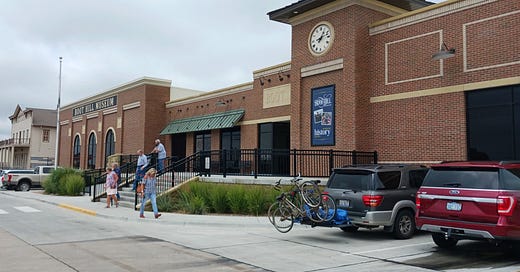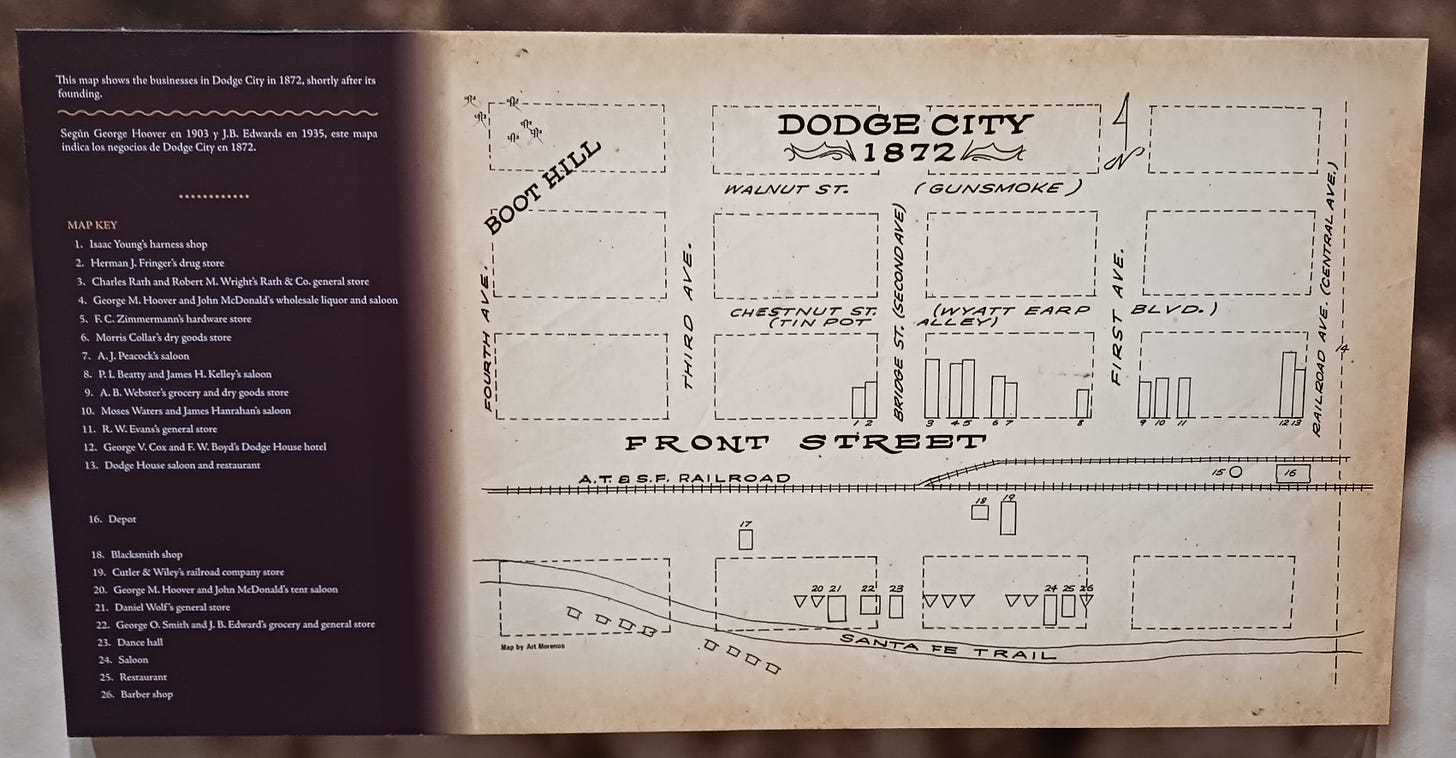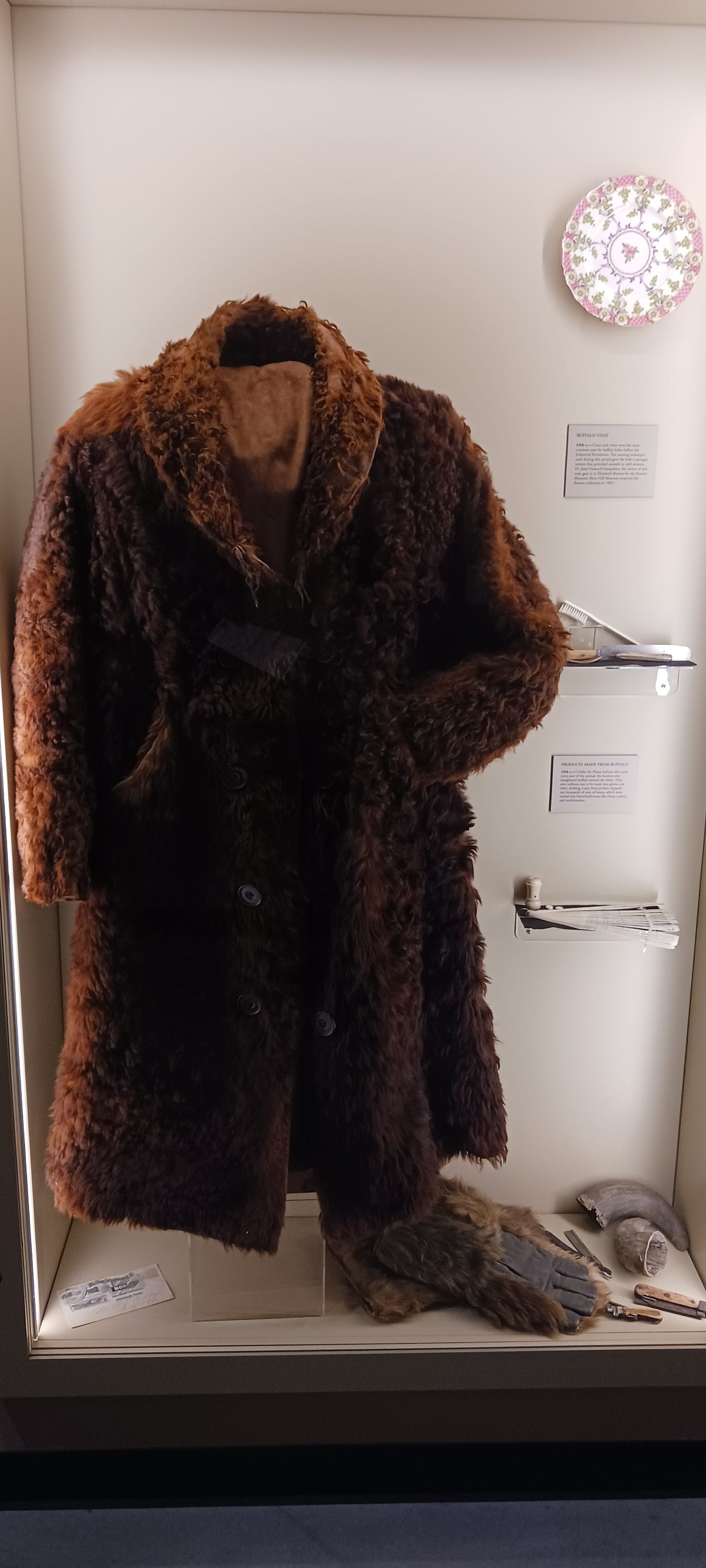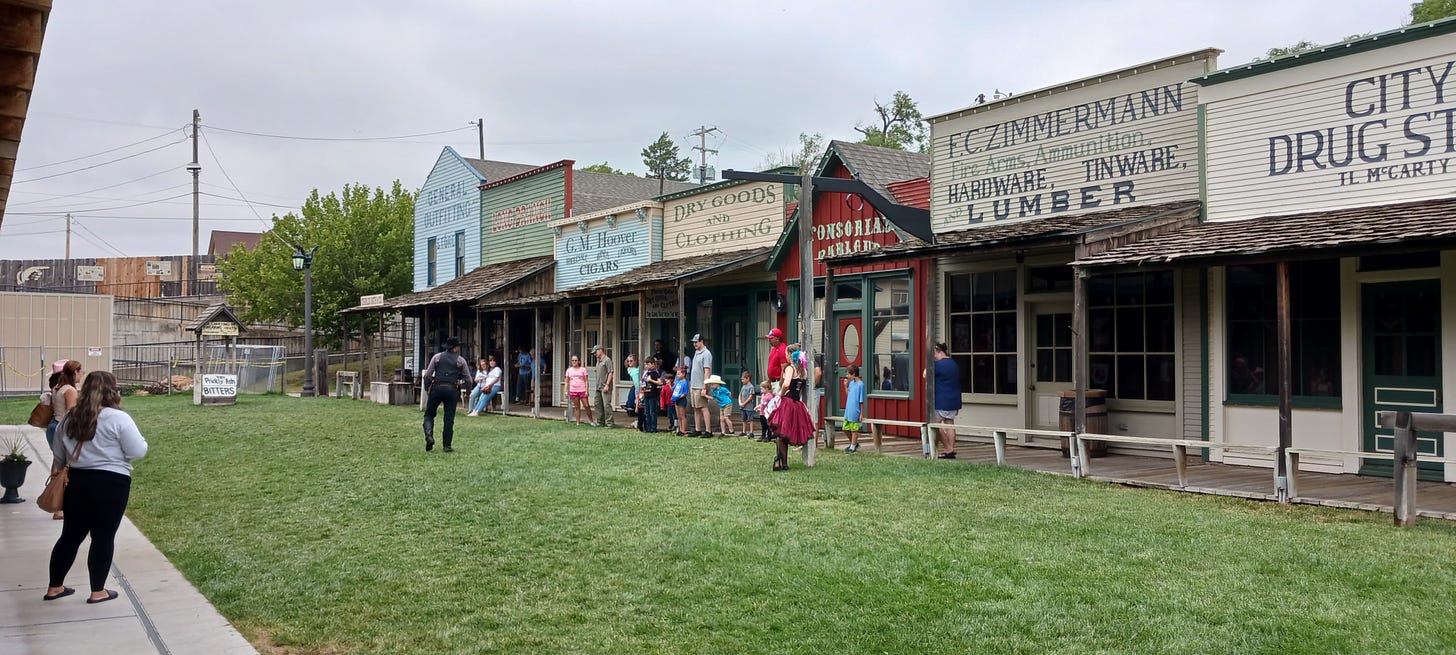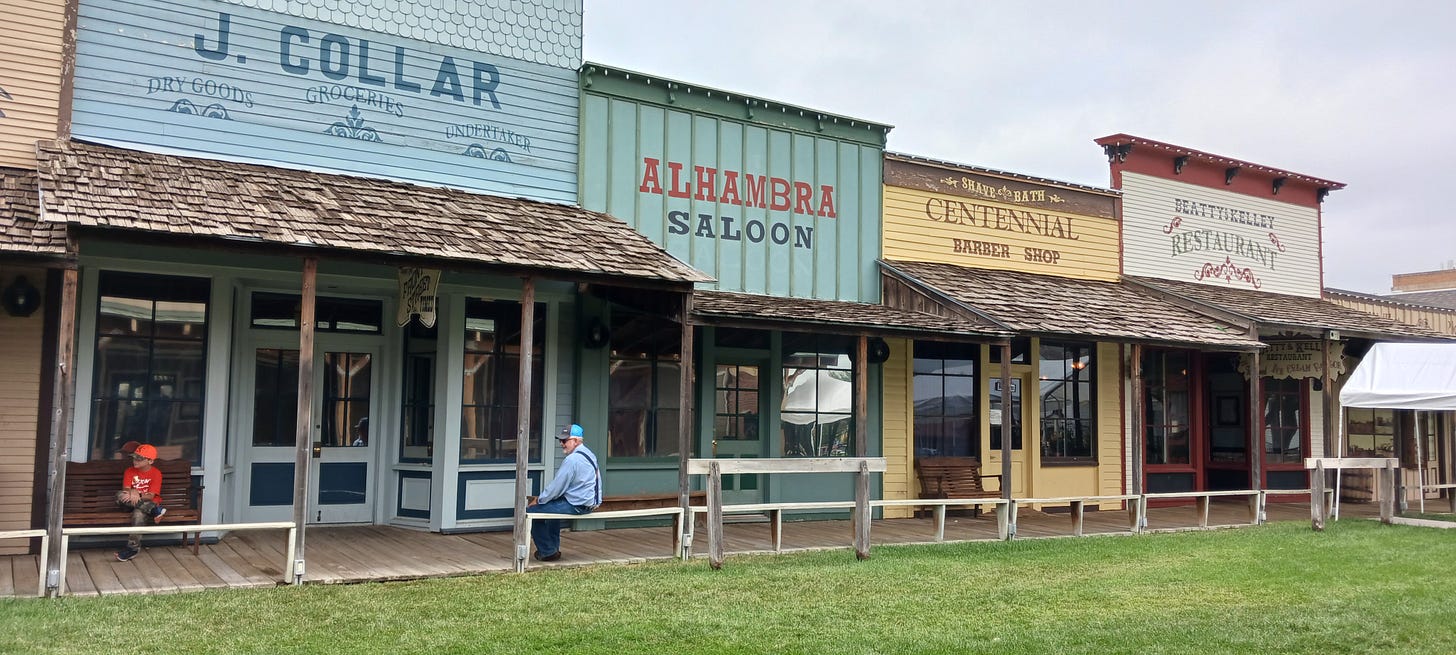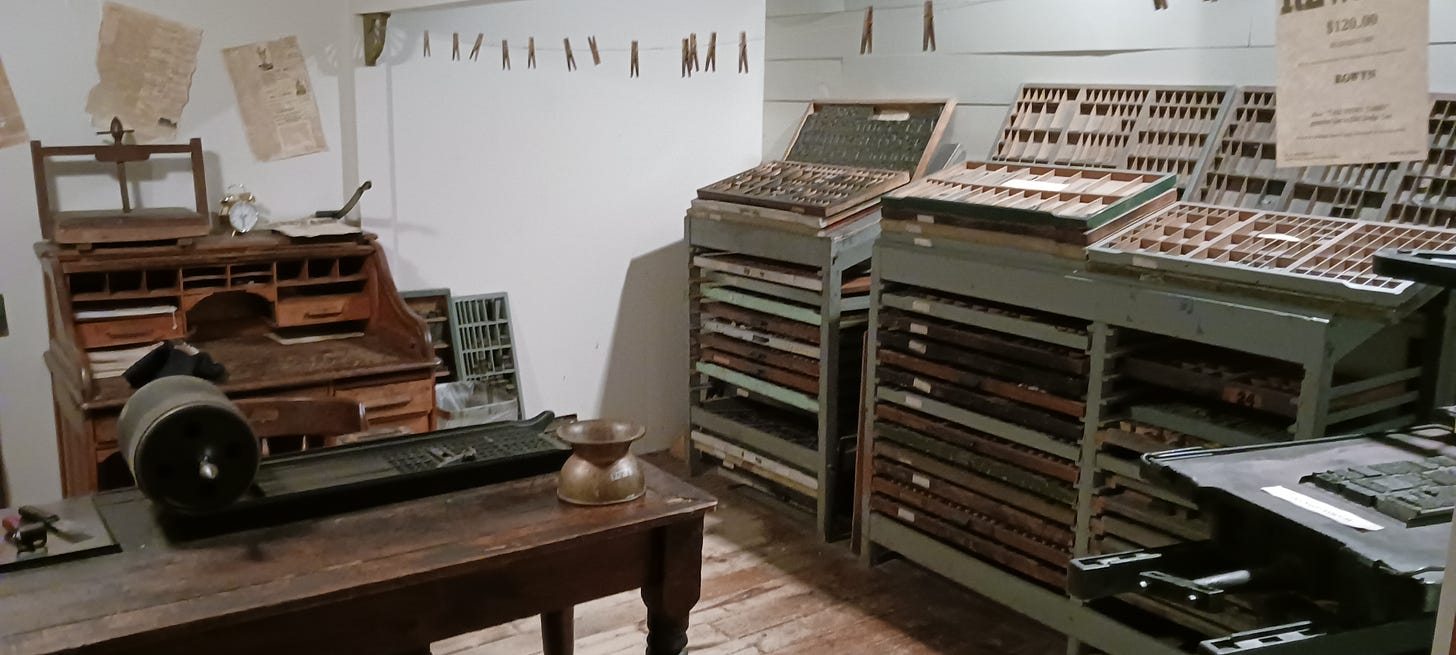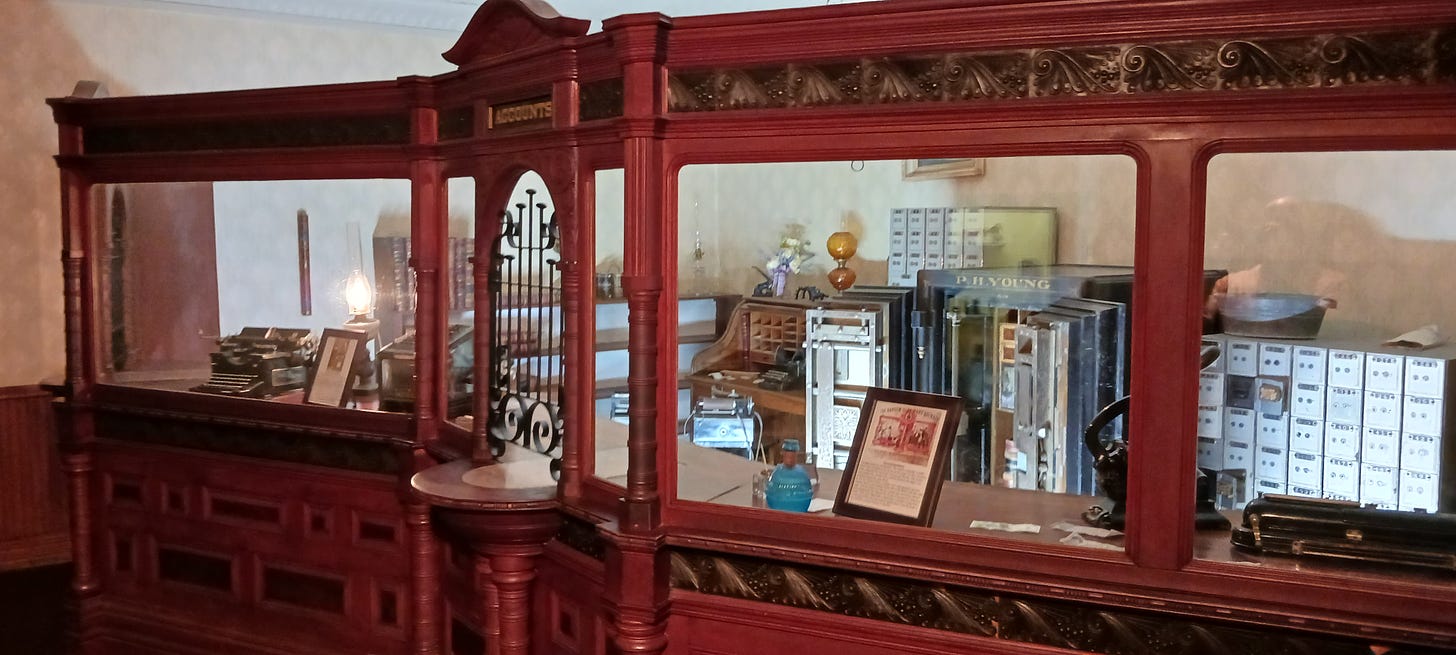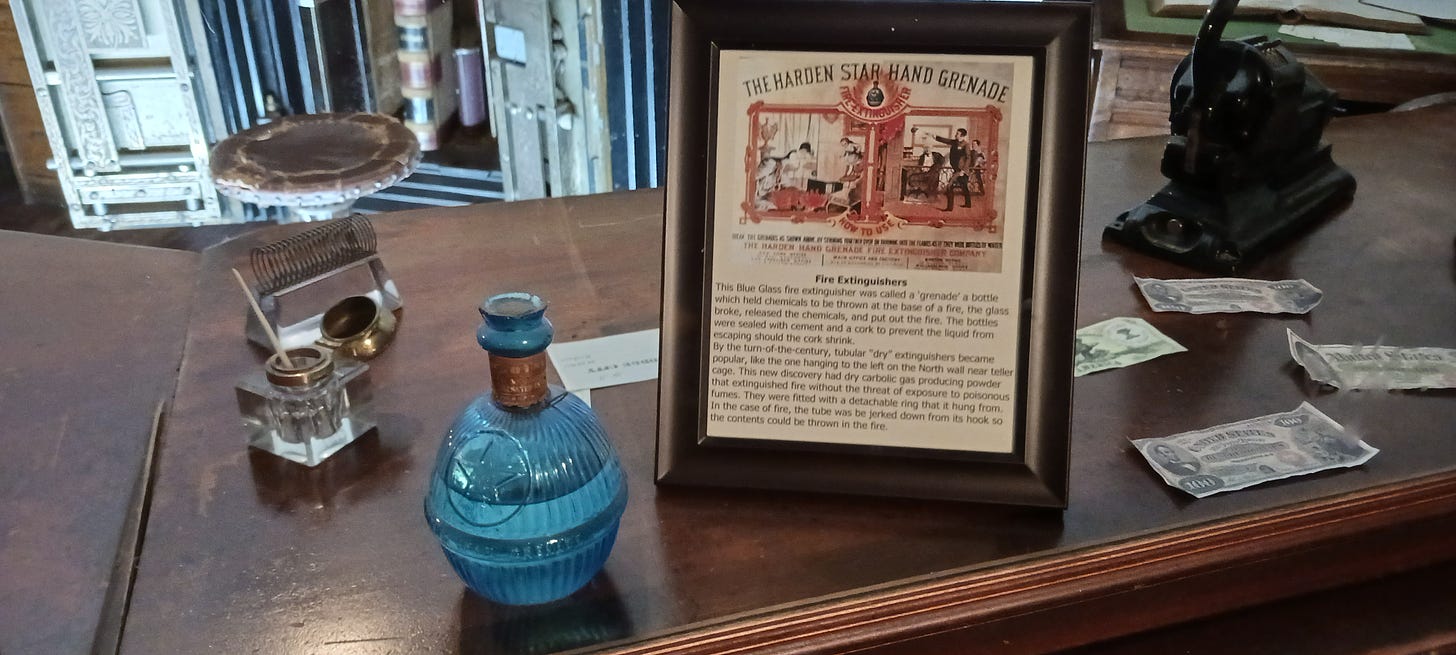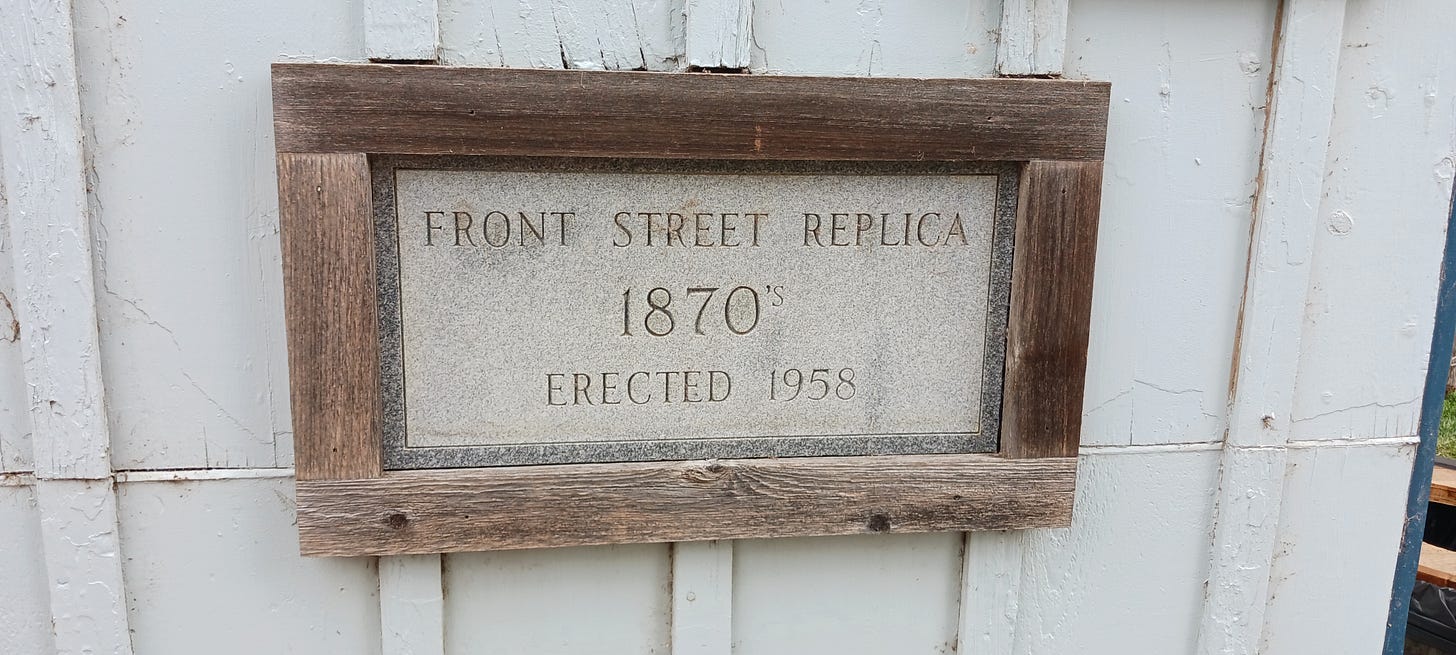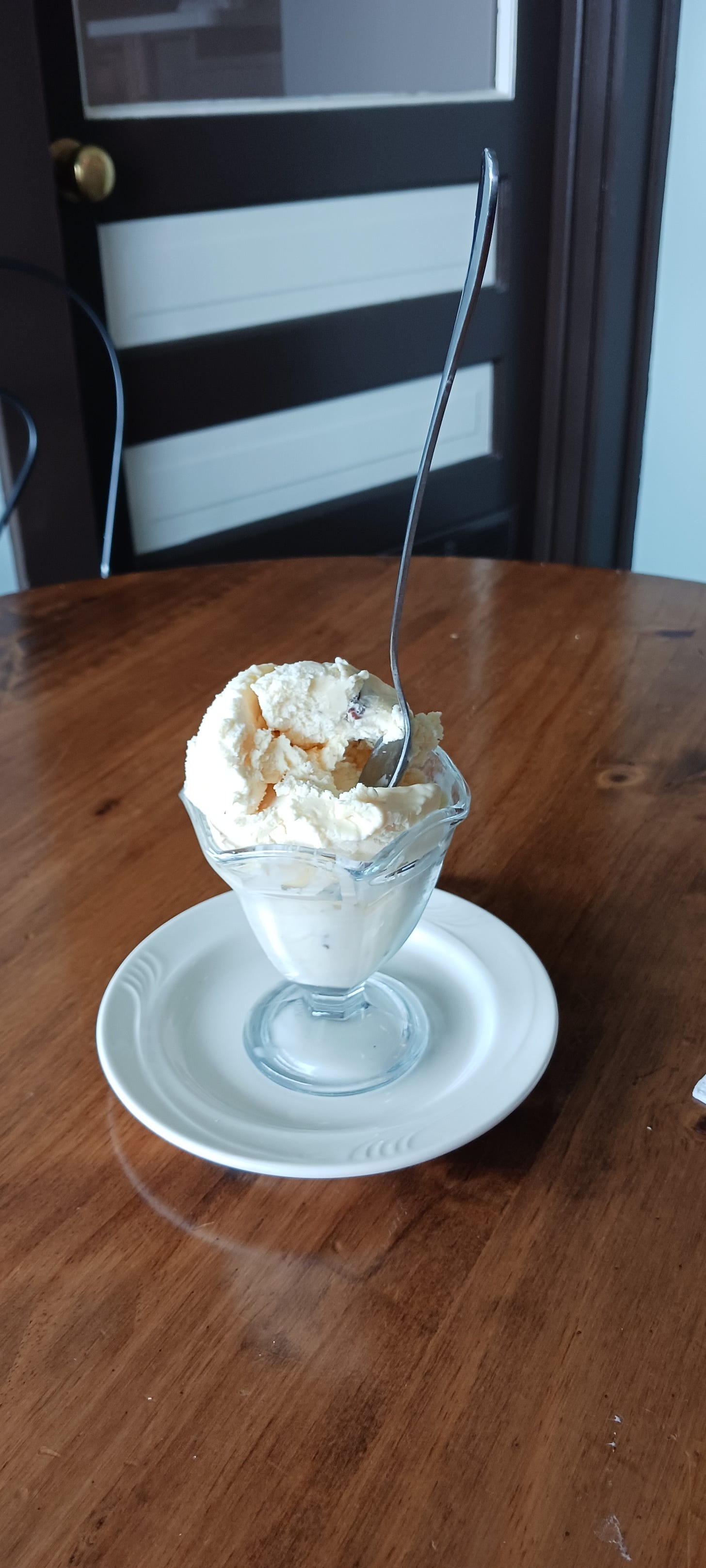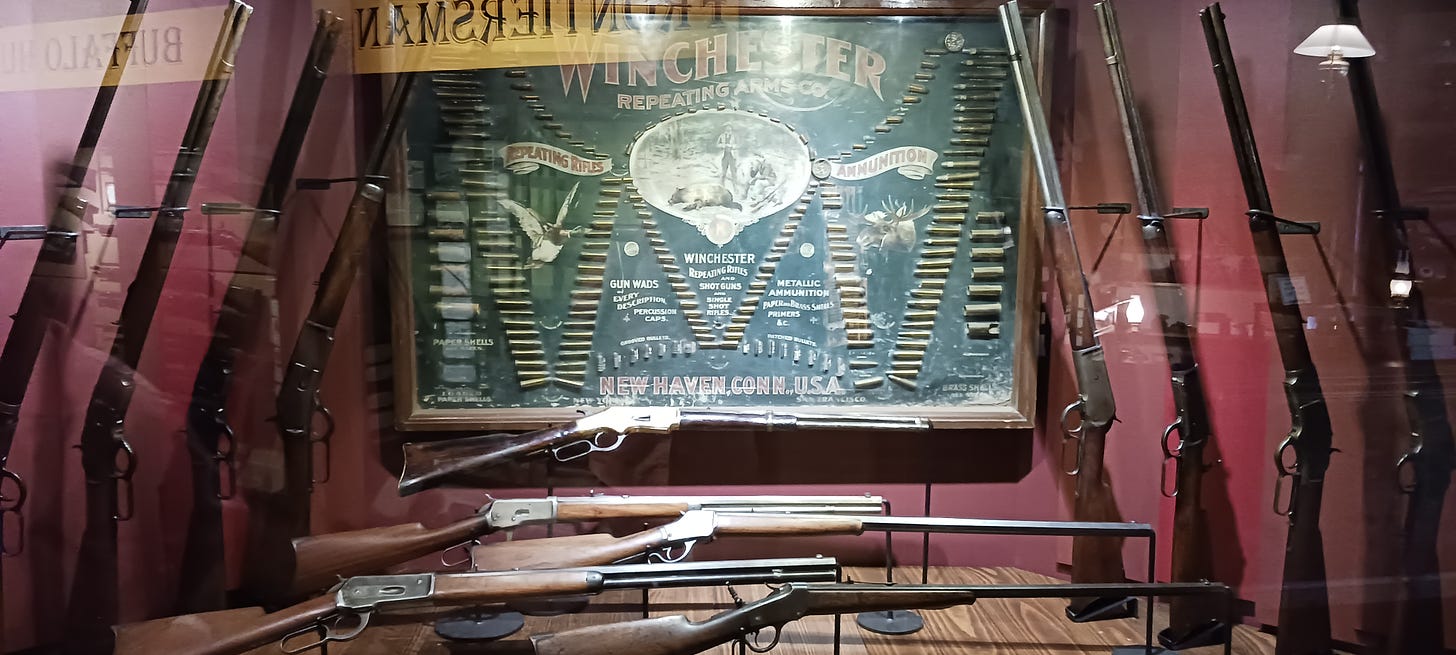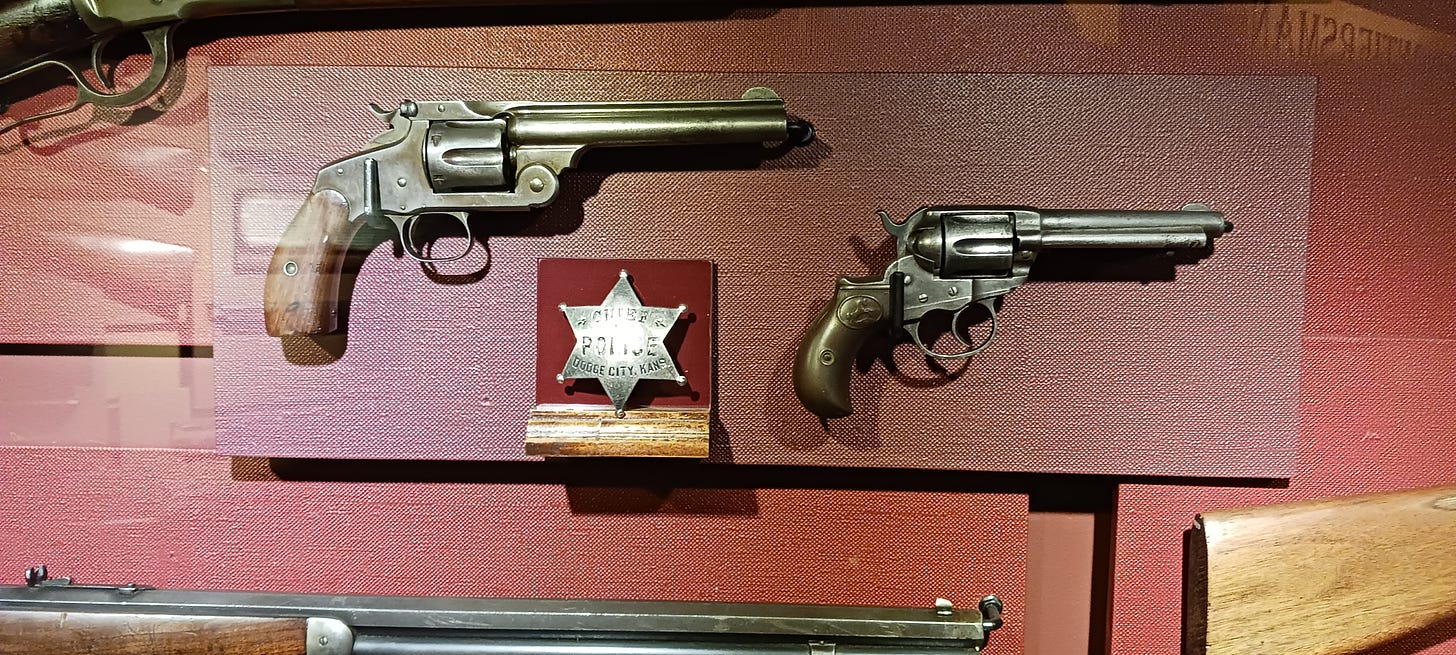Dodge City Days III: Boot Hill (I)
In which our protagonist enters the heart of Dodge's Wild West Days
For the first six years of its existence, from 1872 to 1878, Dodge City did not have any official cemetery. Instead, its citizens buried them on Boot Hill, so named because of the many who died in the continuous fighting that took place along Front Street. The name comes from the fact that so many were buried on that hill “with their boots on,'“ having been gunned down in them. Depending on which source you consult, somewhere between fifteen and thirty men were buried on Boot Hill in the first year of Dodge City’s existence alone.
It is this part of the city’s lore that is the justification for it being something other than a Midwestern cow town, and as I saw when I first arrived, the city fathers are quite aware of it, having renamed some of its streets “Gunsmoke” and “Wyatt Earp.” But like the town itself, even the obvious mythologizing that goes on with the early cattle era of its history has an air of authenticity to it, despite its fabricated nature. Like I said, Dodge has character, and perhaps because it is not a highly sought after tourist destination, it retains it in spite of efforts to advertise it as such.
The Boot Hill Museum is just east of the actual Hill itself, and is a fine example of a contemporary museum—well laid out, not too large to see in an hour or two, and lots of nice displays. (Especially if you are a man-child who wants to pretend he is Wyatt Earp. Not that I would know anything about that.) Easy to navigate and informative, it was my first stop on my afternoon touring the heart of Dodge City’s “historic district.”
Dodge City sat in the middle of a network of cattle trails and later railroads that made it a hub for both cattle but also Buffalo, and for the decade or so that the cattle drive existed, also made it very wealthy. So many Buffalo hides were sold in Dodge that it gained the nickname “Buffalo City.” One hunter named “Prairie Dog” Dave Morrow made his name by killing the White Buffalo, an animal sacred to some Native American tribes but which some at the time thought did not exist. Morrow hauled one into Dodge in 1873 and sold it, whereupon its carcass was displayed in New York City till it was destroyed by a fire a few years later. (I don’t know if Morrow has any relationship to the novel or film The White Buffalo.) Morrow later when on to become a law man, working along side Bat Masterson and Wyatt Earp.
The museum had a mock up what Front Street might have looked like out behind the museum, which housed a few more displays—of a bank and a printing press—with some shops and an ice cream parlor, where I cooled off with some ice cream, the temperate weather having finally departed by the afternoon.
I have to mention this blue beauty in the picture above: the “Harden Star Hand Grenade.” Not used in shootouts between lawmen and gun fighters, it was actually an early fire extinguisher filled with chemicals to put out fires (which according to the display in the picture used “dry carbolic gas” to form a powder that put out the fires—who knew?)
If you like displays of guns from the Old West, you will love the Boot Hill Museum. The display below is of Winchester rifles from the period, including the Winchester ‘73, the “Gun that Won the Old West.” This famous model was even the subject of a Hollywood film starring Jimmy Stewart (it’s the second from the bottom in the picture below, with an octagon barrel).
Besides the Front Street Replica and the Museum itself, the surrounding area, which is also run by the Museum, contains two buildings from the old hey day of Dodge in the 1870s and 1880s: Union Church, and the Hardesty House, which we will look at next time, along with some of the social and religious history of Dodge City.
